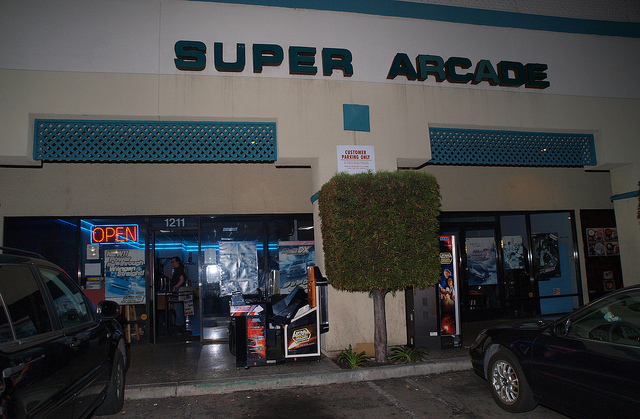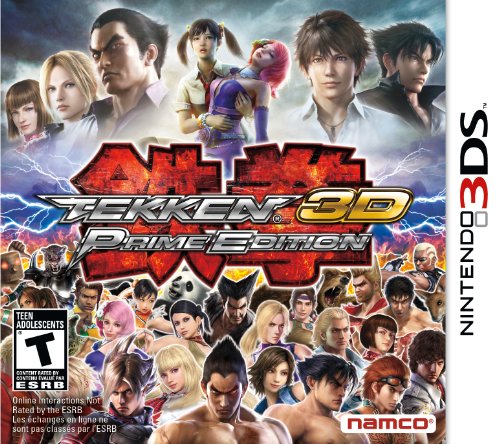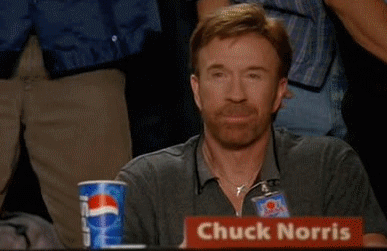

- Premise & History
Tekken Tag Tournament 2 is the 8th mainline entry in the historical fighting game series, 11th if you consider Dark Resurrection, Bloodline Rebellion, and Advance as complete mainline entries. Development started shortly after the release of Tekken 6 BR early 2009 in parallel with the console version of Tekken 6. The scheduled release date in Japan has been finalized to September 14, 2011. Further releases in Korea, Phillipines, Australia, New Zealand, Thailand, Indonesia, and other countries in the Pacific Region will be held in the coming months.
- Arcade Information & Banapass Information
- Pricing is as Follows:
i. Delux Cab: 4,180,000 yen
ii. Delux Kit: 2,380,000 yen
iii. PCB: 698,000 yen
- Tournament 2 is the first game machine by Namco Bandai that connects to a network world wide. To maximize the machine and the network connection performance, a "Live Monitor" is used in conjunction with the machines, allowing each country or region access to the top 20 players customized data that can be researched and compared at any time.
- You must have internet connection for this game to work (the game cannot work offline)
- You must have the game board charged via prepaid cards, ie, you buy charge cards which add "points" to your game board. Each time a player using the machine, 5 points are deducted. If your game board has zero points, the game stops working.The concept is that weekly/monthly live updates are given to the game board introducing new characters, venues, combo moves and more. These updates occur automatically without the need for the game owner to manually update their machines.
- Banapass
- Banapass is the next step in the card based system for holding all the data of your character for Arcade fighting games pioneered by Sega with Virtua Fighter. In the old system, you needed a separate card for each character you played as. But now the Banapass promises to hold the data for every character in the entire game. Also, the Banapass will also be compatible with other games such as Dragonball Z: Zenkai Battle Royale. The other big news is how you can use this card indefinitely rather than the old cards where you had to get them renewed after a certain finite number of plays. There are also rumors that the Banapass will work with Sega games as well in the future which could be pretty big news in that regard.
- For more information go here
After NEC During the Dec 3 weekend, Namco announced the Location tests for the United States. The location test details:
Start Date | Location | Address
12/5 | Fun Works (Ala Moana Shopping Center) | 1450 Ala Moana Blvd. #1060 Honolul, HI 96814
12/8 | Super Arcade | 1211 N. Grand Ave. Walnut, CA 91789
12/8 | Round 1 Entertainment | 1600 S. Azusa Ave. Suite 285 City of Industry, CA 91748
12/11 | Arcade UFO| 3101 Speedway Austin, TX 78705
Unfortunately there is no location test in NYC as there are no Namco operated arcades in the area and the arcades we considered didn’t have compatible cabinets.
The link to the TEKKEN-NET site for the location test is
http://exam.tekken-net.jp/
The location tests are scheduled to last until 1/17/2012 and all the data saved on Tekken-net will be erased thereafter.

Tekken Tag Tournament 2 will have the biggest roster of characters in the history of the series. Tekken 6 was the second highest with 41 characters total (38 if you don’t include Mokujin & Kuma/Panda – Christie/Eddy palette swaps). Tekken Tag Tournament added 3 more new characters to the roster bringing it up to 44:

First Row:
Paul Phoenix,
Mashall Law,
Lei Wulong (2) (3),
King (2),
Yoshimitsu (2),
Nina Williams (2),
Hwoarang (2),
Ling Xiaoyu (2),
Christie Monteiro (2) (3),
Jin Kazama,
Julia Chang (2)
Second Row:
Kuma,
Bryan Fury (2),
Heihachi Mishima,
Kazuya Mishima,
Lee Chaolan (2),
Steve Fox,
Craig Marduk, Mokujin,
Jack-6 (2),
Roger Jr.,
Anna Williams (2)
Third Row:
Wang Jinrei,
Ganryu,
Asuka Kazama,
Bruce Irvine,
Baek Doo San,
Devil Jin,
Raven,
Feng Wei (2),
Armor King,
Lili Rochefort,
Sergei Dragunov
Fourth Row:
Eddy Gordo (2) (3),
Bob Richards,
Zafina (2),
Miguel Caballero Rojo,
Eleonore Kliesen (2),
Lars Alexandersson,
Alisa Boskonovitch,
True Ogre,
Jinpachi Mishima,
Jun Kazama (2),
Panda
Click to see their partial movelist from the latest Arcadia magazine (Japanese only). For a comprehensive collection of data outlining all of the major differences between the current build of characters and their previous version see this thread:
http://www.tekkenzaibatsu.com/forums/showthread.php?threadid=120491
Tiers as of November 25
S - Kazuya, Heihachi, Lars, Devil Jin, Hwoarang
A - Julia, Bob, Dragunov, Leo, Armor King, Zafina, Bruce
B - bryan, marduk, Jack, Lee, Nina, Lili, Steve, Feng, Jin, Paul, Anna, Jinpachi, Wang, Eddy, Christie, Asuka, Jun, Law, Miguel, Lei, Ganryu, Yoshi, King
C - Ogre, Ling, Raven, Bears, Alisa
D - Roger, Baek

Notation:
The Tekken controls have always been probably the most intuitive out of all the fighting games where each of the 4 face buttons represent the limbs of your fighter: 1 for your left hand, 2 for your right hand, 3 for your left foot, and 4 for your right foot. Based on these alone it was always fairly obvious what command would represent what attack just from visually looking at the moves since you’d automatically associate a button with whichever limb you saw go out to attack.
And the Tekken pad warriors generally play with their fingers just like an arcade stick simply because all of the individual commands in Tekken can be mapped onto all 4 of the face buttons so there is no need to resort to your thumbs where it might be difficult to press combinations like 1+2, 3+4, 2+3, 1+4 among others. However, since the release of SFIV vanilla, tournaments no longer had the strict ban against button mapping onto the shoulder buttons so there has been a rapid influx of pad users in tournaments using their shoulder buttons.
^^^Above image of Mr. Naps (NA's best Bryan) vs Rip (2009 EVO champion, 2010 EVO Runner-up, 2011 EVO 3rd Place) playing on Pad

Being a 3D game Tekken has always been about the in your face man v man struggles and hence has been more times than not been accused of being a game where you can resort to button mashing where the game's depth can be thrown out the window. Hopefully I can present a set of basics to everyone and show them the simple things that are really going through players mind in high level play and extinguish that misconception.

Extremely simple,there’s nothing so complicated like in the levels of Blazblue’s HUD. It basically shows how much health you have, how many rounds are left, and the time left for the round to finish. The only unique thing in the lifebar for Tekken Tag is the blinking bar. The blinking bar indicates that Netsu is activated and that’ll be explained later on.
In TTT2 is that the overall character HP appears to be the same in Tekken 6. Even though the developers claimed that there is now a pool of 2 health bars between the characters of a team so each individual lifebar will have a reduced amount of health to compensate for this and prevent longer rounds. But in actuality it appears that the damage dealt has been REDUCED over Tekken 6 especially when it comes to Juggle damage in the latest build shown for location testing at EVO:
As we saw above thanks to the footage provided by Kane, the exact same combo was done by Lili in both versions of the game and at the last few seconds of the animation, the overall damage inflicted was less in TTT2 compared to T6, so that was quite interesting.

This is the core fundamental aspect people playing Tekken need to grasp. Since Tekken doesn’t have any zoning style projectiles, newer players automatically run up and start attacking (or mashing). What they really should be doing is trying to learn the deep footsie game and learn to space themselves properly.
The first thing people might realize is how hard it is to simply back away from a barrage of attacks your opponents throw at you, you can’t simply jump away and air tatsu out of a sticky situation. Holding back to walk back goes at a fairly snail pace, and backdashing has an extremely ugly recovery time after the backdash. What you have to learn is backdash cancelling. This is a technique founded by the Koreans Sung Dong Min, Jang Suwan, and Jang Iksu Tekken immortals back in the Tekken Tag Tournament days. It was the birth of a new frontier of turtling possible in Tekken. See the gif below:

You can see the Bryan player holding back to back away, the next sequence you see Feng doing one backdash (I’m sorry it was VERY hard to find footage of people doing only backdashes) it’s kind of hard to notice but after Feng takes a step back he will be trapped in that position with a fairly large amount of recovery frames. However, then you can see Kazuya backdash cancel where he cancels the recovery of the backdash by going into crouch by pressing d/b and backdashing again before followed by another backdash cancel and repeats. Properly backdash cancelling enables you to properly space yourself and punish your opponent most successfully. This is the stand alone tactic which differentiates the best players and simply why the Koreans continue to dominate this series.
This and
this are videos from Aris further emphasizing the importance of movement in the game.
Backdash cancelling is paramount of importance but it’s not the only method of punishing your opponent. Simply ducking a good high in a string you anticipate or even sidestepping a linear move you also anticipated can also lead to big damage:
But if you’re really hungry for damage and you timed your sidestep perfectly against a linear string or a hail-mary, you can go further and sidewalk all the way to behind your opponent to get some even bigger damage. But you have to be careful if your opponent knows you’re sidestepping them, they can use various tracking moves in their arsenal to catch you. Or they can simply use homing moves which will catch regardless of the direction you sidestep in:
Notice the streak that followed Lili’s leg as she did the rotating kick on Jin as he attempted to side-walk her, that’s the visual cue that tells you it’s a homing move.

Attack strings are simply a flurry of attacks that come out your character following a prescribed combination of button inputs. These don't require any timing per se and can be "mashed" out. For example, you hit 1,2,1 from Dragunov. He'll do a left, right, left punch combination which is simple enough. However, the properties of these attack strings are definitely something that should be considered as seen in the gif below.

As you see, these are different from target combo's in Street Fighter in the sense that they don't necessarily mean every hit following the first attack will be guaranteed if landed cleanly. As you saw with Dragunov's 1,2,1; getting the first hit only guaranteed the second and the 3rd was blocked. However, if the first hit was done with a counter hit, then all of the next 2 punches were guaranteed. Therefore the 1,2 is an NC or a "Natural Combo" and the 1,2,1 is a NCc or a "Natural Combo only on counter hit". There are lots of strings out there in everyone's movelist that have these sort of properties and can be useful like in Dragunov's case, the 1 is a 10frame jab so it is highly likely you will be capable of getting the first hit as a counter hit.
Some strings might not have a first move that has such a fast startup BUT they can still be used for deadly mixups where the strings can branch into different attacks as seen in the gif below:
Characters like Nina, Asuka, Anna, and others have attack strings that can branch into different moves where your opponent will be forced to guess between high and low attacks which can be really useful in closing rounds. Other strings can also be delayed, and hence baits your opponent to punish your attack when you have the last followup ready to catch him/her like Law's b+1,2,1:
Every character also has at least one 10 hit string in their arsenal. It is like the title, a series of 10 attacks all alternating between high, mid, and low attacks allways ending with a devastating strike. These are usually the weapons that are done to eliminate mashers or torment people that are new to the game since they wouldn't know when to anticipate a low or a high to evade or low parry (covered later). These things aren't used in competitive play which is why I couldn't find any footage of it used in a match, but here is Ling Xiaoyu's from the TTT2 Prologue's model viewer:
Lastly, the attack strings are usually very punishable and that's why you won't see people throw them out in the open during matches all that much. If they aren't punishable, then they would usually be able to be evaded with a sidestep or a duck or even a low parry to counter them as seen in the gif below:

Running is an important tactic in Tekken because it is a very quick way to cover ground from an enemy far away for you to keep pressure and when you are in a running state, you have access to a core set of attacks:
- Cross Chop - 1+2 after two or more steps: Your character does a double fisted head-first dive into your opponent.
- Slide - 4 after 2 or more steps: Your character does a baseball slide doing a quick low attack that knocks down your opponent.
- Shoulder Tackle - Automatic after 3 steps: Your character automatically shoulder charges into the other character carrying the momentum of running those 3 steps.
- Slash Kick - 3 anytime during the run: A Bruce Lee style leaping dragon kick on your opponent that leaves you at a lot of (+) frames if they block it and knocks them down if they get hit, but it's easily sidesteppable
- Floor Stomp - Automatic after 2 or more steps on grounded enemy: If your opponent decides to stay lying on the floor, you will step on them as you run past him/her

But if you run into your opponent after 2 or more steps, you get an unblockable tackle where you pin your opponent on the ground and you can unleash any combination of up to 4 punches using either limb. There are 3 windows of breaking the unblockable tackle as seen in the gif below:
Many characters get access to specific attacks while they are in a running state, for example Julia:








































































































































































































